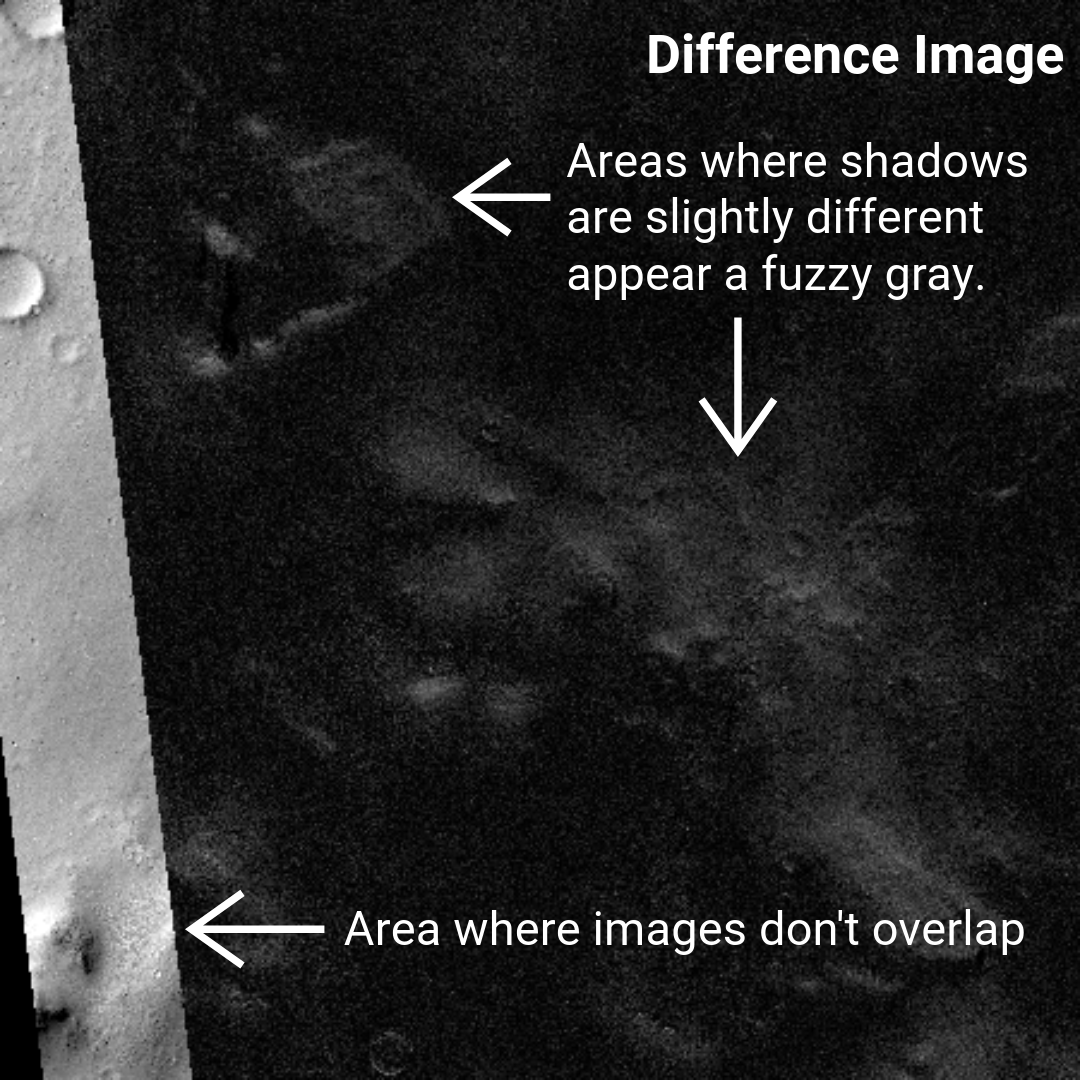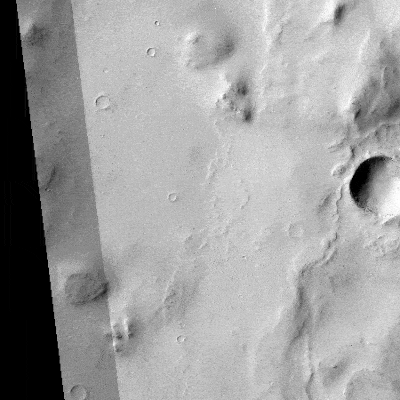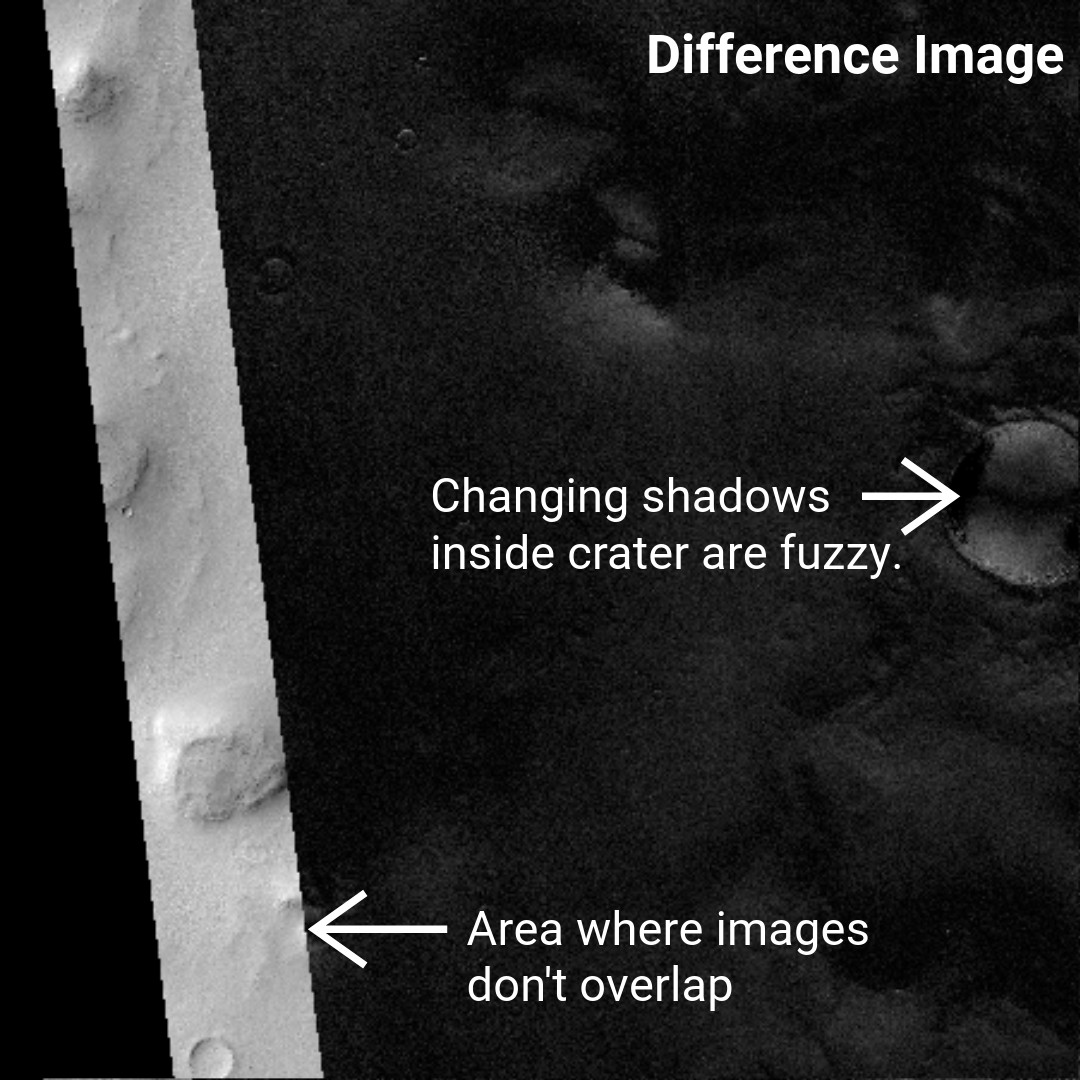Mars Mosaics: Examples
We know everyone just wants to dive into doing science, so we keep our tutorial as short as possible. This means you’ll encounter situations the tutorial may not have prepared you for. In the examples below, you can learn about different things that can affect the images you’re comparing. If you don’t see an example specific to what you’re seeing on your screen, grab a screenshot and share it with us on our partner Discord channel, CosmoQuest.
A typical well-aligned pair
As MRO passed over Mars during two different seasons it took these images. A slightly different region was imaged each time, so there is an area only seen in one image (on the left), and the shadows aren’t the same so there is faint grey where there is shadow.
Key Detail: There are no sharp white edges from misalignments, there is only fuzzy grey from shadows changing. The features are perfectly aligned!



Blink to avoid being fooled by crater shadows
Changes in shadows can be dramatic inside craters, and they might trick you into thinking there is a problem. It’s important to blink images you think might be poorly aligned to make sure it’s the images and not the shadows that are offset.

Key Detail: The crater edge and the other flow features in this image do not move while the image blinks. Only the shadows move. Perfectly aligned!.
